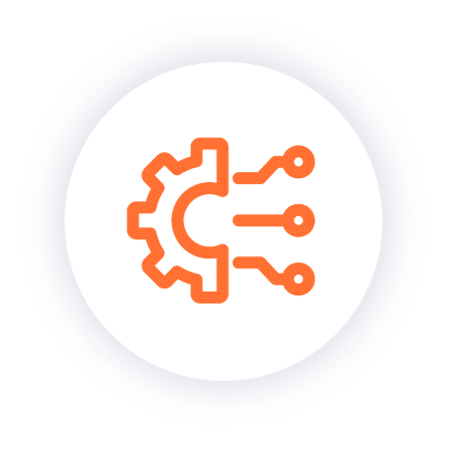The Era of Cloud-based, GPU-enabled Workstations is Now
by Jake Zawlacki, Morro Data, and Michael Keen, Workspot
This week we are very pleased to share a blog developed jointly by Jake Zawlacki of Morro Data and our own expert cloud architect, Micheal Keen.
Business as Usual Is All About Change
For businesses to thrive, they must be on the move and willing to adapt to new situations. If these past couple years have taught us anything, it is that agility in these movements is more important than ever.
“Business as usual” has long implied the absence of change, that things today are much as they were yesterday and the day before. Yet business leaders today know just the opposite to be true: Business as usual is all about change. It is not about maintaining a static state; it is all about operating successfully in a dynamic state where change is the norm, not the exception.
- The rate of change has greatly accelerated over the past 20 years. Some product lines that once had a viable lifespan of 20 years or more may now have a lifespan of fewer than seven years, with the lifespan of individual products sometimes lasting less than a single year.
- The scope of change has expanded. An entertainment company no longer only focuses on introducing a film for distribution to theatres. Now it plans for distribution globally through a combination of streaming platforms and theatres, or maybe just straight to streaming.
- The enablers of change have proliferated. New technologies appear daily to help improve internal and external processes; foster new relationships with suppliers, vendors, and customers; and open new ways of delivering your goods and services. The cloud itself has become one of the greatest enablers of change, stimulating increased flexibility, agility, and new avenues for creativity. It is no surprise, then, that more than 90% of today’s organizations have adopted cloud computing in some manner. It has also expanded the source of competitive threats, for challenges can come from anywhere without warning.
The enterprise that can respond rapidly to new opportunities and threats, introduce goods and services at a pace the changing market demands, and move nimbly into new markets and geographies will outperform the enterprise that cannot adapt as quickly. Indeed, those organizations that cannot adapt quickly face significant penalties. In some industries, a six-month delay in product introduction might reduce lifetime product revenue by 30% or more. In other industries, a six-month delay means the enterprise has missed the window of opportunity entirely.
To thrive in a world where business as usual is all about change requires a new kind of enterprise, one designed to evolve quickly and easily, to respond to and foster change, and then turn it into a competitive advantage.
The Needs of a Modern Business
While remote work has grown in popularity over the past decade, there has been no greater impetus than the Covid-19 pandemic. With many businesses forced to adopt remote work, however, surprising findings have begun to arise. Employees are happier working from home and they’re also more productive.
Additionally, a remote workforce expands possible employees the world over, allowing for higher competition and the right fit. It also means businesses require more agility in their technology to maintain an effective and collaborative team.
Traditionally, AEC organizations have either provided users with physical workstations or virtual desktops using on-premises VDI. However, each approach presents some major challenges:
- Inefficient collaboration between users in multiple locations
- Traditional VDI complexity prevents instant scalability and untenable latency for remote users results in poor user experience and productivity
- Engaging the best talent may require setting up costly branch offices
- Data integrity and intellectual property can be at risk
- Expensive hardware refresh cycles are required to access new technology
- Resource intensive management & maintenance of physical workstations
By moving physical workstations and legacy VDI systems to the cloud, businesses can decrease their total cost of ownership while maintaining and even improving security and compliance, and most of all, they can work effectively from anywhere in the world.
Workstations in the Cloud Modernize Legacy VDI
The legacy VDI stack is complex. IT teams must architect, acquire, provision, integrate, test, and operate hardware and software from multiple vendors. It can take months, if not years, to stand up a robust VDI solution, and for some use cases, even after all that effort, it just does not work well. In today’s world, when customers maintain their legacy VDI solutions, the data and applications they need are delivered from a singular data center, usually on-prem, as shown below.

Legacy VDI is also notorious for performance issues that make users less productive. When desktops are slow, any of the numerous VDI stack components could be the source of the problem. Unfortunately, this is where the guessing game of troubleshooting begins. End-user support calls can result in multiple functional teams being involved to diagnose the root cause: Is it a server issue? Storage problem? Networking glitch? What about load balancers, gateways, virtual servers, legacy VDI, access devices, and the myriad of other components involved in the stack? Meanwhile, as troubleshooting proceeds, the loss in productivity can be significant, from $50/user/hour of downtime for knowledge workers to $500,000/user/hour for financial services employees.
3D CAD/CAM/CAE and complex BIM applications require high-performance computing power to process graphics-intensive workloads, and project teams must collaborate on shared 3D model datasets. Moreover, project teams cannot afford to waste time waiting for a never-ending series of file and data uploads and downloads, often taking hours as they share large, graphics-intensive datasets. The cost of project delays is just too high. Keeping BIM users productive is critical for the success of all AEC firms. Every hour a team of BIM users waits for data to finish synchronizing can result in hundreds and thousands of dollars of wasted productivity.
Today, with modern end user computing solutions, engineers should expect to be able to visit a project site, securely access applications and data, and collaborate in real-time with architects, BIM managers, and partners. And when inspiration strikes in the middle of the night, designers will have the opportunity to be productive from home on any device. Firms that seek a competitive advantage will need the finest available talent, no matter where people reside, without having to duplicate IT infrastructure in remote branch offices. Similarly, an agile organization will be able to scale workstation resources securely and efficiently to immediately onboard new employees and accommodate contractors for temporary projects.
Workspot modernizes legacy VDI solutions by delivering a turnkey, enterprise-ready, elastic cloud desktop solution available globally today. The solution’s core is the Workspot Cloud Desktop Fabric which abstracts and simplifies the public cloud for virtual desktop use cases. Workspot customers simply select their Cloud PC and cloud workstation configurations and images, and their enterprise use cases are quickly addressed. The applications and data they need are usually within 25-50 ms – a negligible level of latency – from the end user no matter their global location.

In particular, Workspot GPU cloud workstations provide the following advantages:
- Remote access from anywhere
- The most demanding power users love the performance
- Easily scale up and down the number of workstations
- Always up-to-date technology for reliability, availability, and security
User and Data Proximity for the Best User Experience
You can have the best solution technically, but if your user experience is unsatisfactory, you have lost the chance to deliver value to the business. To get the best user experience for your users, the data must be as close to the compute as possible and is a critical component in your cloud architecture. The cloud allows you to accomplish this. The first step is to answer some key questions:
- Which users would be involved?
- Functional roles, compute needs by roles?
- Full vs Part Time Users
- FTEs vs Contractors
- In-office vs Remote
- Geographic locations
- Deployment Vision
- Single cloud region vs multi-region, or even multi-cloud
- Persistent vs non-Persistent cloud workstations
- Endpoint device strategy (laptops, desktops, thin clients, monitors, etc.)
- Security/Networking considerations
- Storage goals/considerations
- Current storage (TB, hot, warm, cold); physical locations
- Need for file lock & sync?
- Other critical storage feature requirements?
Once you have these initial questions answered, overlay the cloud platform – whether Microsoft Azure, Google Cloud, or Amazon Web Service – regions to where your users are located. Here are the regions for Microsoft Azure as an example.

Data proximity is the result of choosing the right file server architecture in the cloud. Compared with the traditional Windows file server, Morro Data CloudNAS global file services does not limit data access from a single file server. With cache and sync, CloudNAS enables low-latency data access in multiple cloud regions.
For instance, let’s say your company has offices in New Jersey, Chicago, Dallas, Phoenix, and San Francisco. Your cloud regions could be, US East, US North Central, US South Central, US West. Once you have your cloud compute in one or more regions, now it’s time for the Morro Data Cloud NAS solution to be deployed. The Morro global file system provides multi-site collaborative file services for sync, lock, transfer, and caching. Interfaces supported include SMB (Windows, Mac) and Web with ACL. At each site, users can see unlimited file system presented as a single namespace.
Morro Data CloudNAS provides these additional advantages:
- File caching and seamless integration with cloud object storage for unlimited storage capacity
- Data syncing for real-time global collaboration among multiple cloud regions and on-prem sites
- File versioning to protect against user errors and ransomware
Modern IT Enables Business Scalability and Agility
The cloud workstations from Workspot and the low latency data anywhere from Morro Data bring together a scalable and agile solution that can span across any geographical regions and cloud/hybrid scenarios.
Modern IT is increasingly comprised of platforms. And the scope and characteristics of those platforms determine the operational efficiency of the organization. Workspot is a SaaS platform for Cloud PCs and GPU cloud workstations, a solution that is undergoing rapid adoption as the agility benefits for driving growth become clear. Morro Data is a platform for file services, abstracting disks, partitions, and locations, thus eliminating the need to manage them. With these enabling platforms available for the cloud-centric workflow, it is time for businesses of all sizes to imagine the possibilities that can be realized by modernizing end user computing and transforming their organizations for the new work era.
Unless you want to wait around for the future Metaverse IT . . . whenever that may happen.
Want to learn more? Schedule a Workspot Cloud PC demo now!



